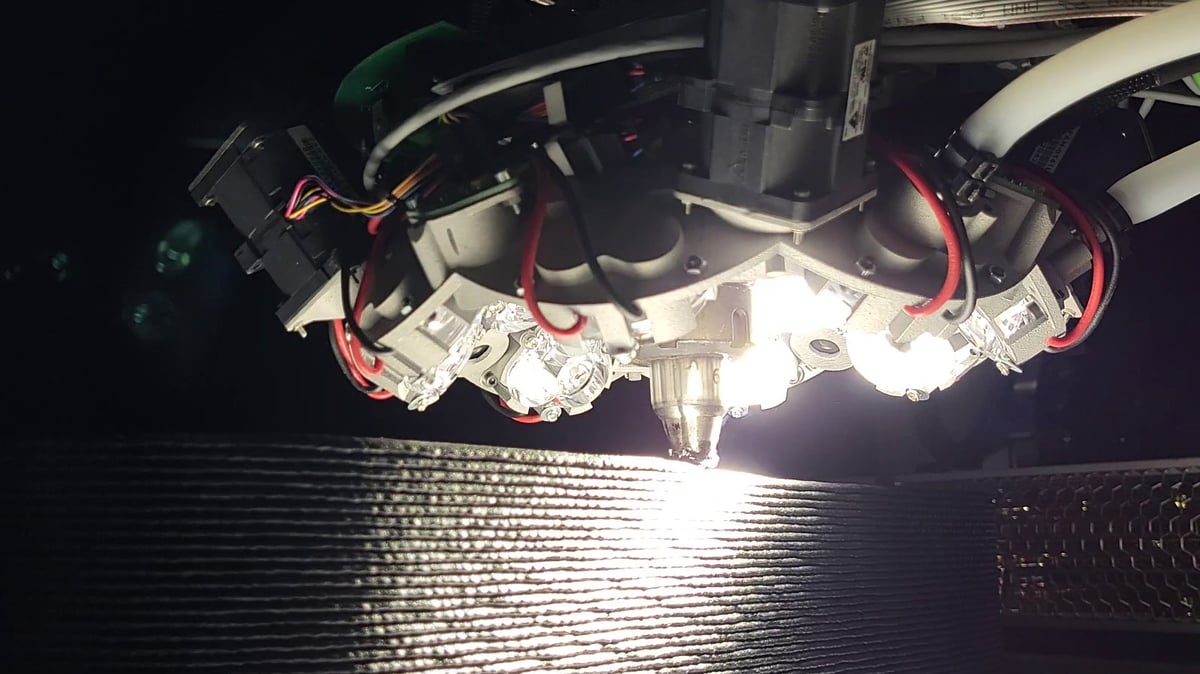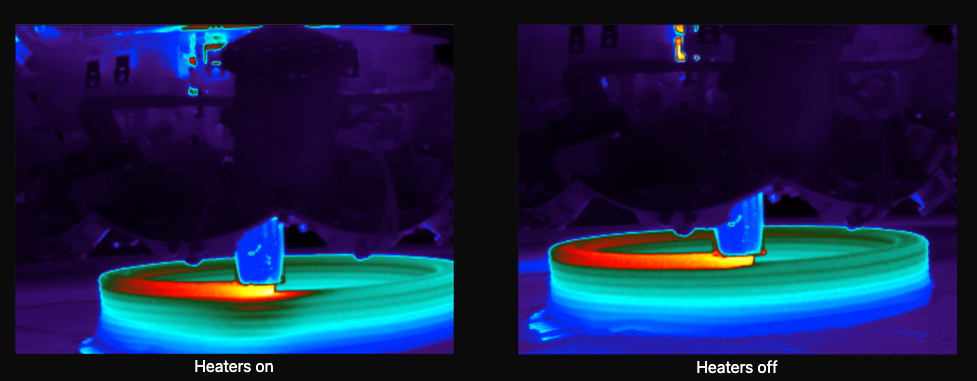When one 3D printed layer doesn’t adequately stick to the one underneath, it’s a problem that’s often not even visible in the final part. Whether from over cooling, too low temperatures, an excessively large layer height, or faulty filament, adhesion failures (technically called delamination) still plagues the 3D printing industry.
There’s no doubt that better adhesion leads to better mechanical properties of plastic 3D printed parts. There’s no lack of advise on printer settings to help, but one start-up out of Germany thinks LED light is the answer.
Light Enabled Additive Manufacturing or LEAM is the name of the young company founded recently by three students from the Technical University of Munich (TUM): Patrick Consul, Ting Wang, and Benno Böckl. Their idea, which they hope will become an actual product by 2025, is to mount LED lights on an FDM extruder just before the nozzle to remelt the plastic of the previous layer just enough so the new layer will stick better.
The trio says their research shows an improvement in layer adhesion using high-performance plastics and LEDs.

Reheating the previous layer is not a completely new concept. Professional FDMs, like the Apium P220, feature a zone heating system directly above the extruder providing energy only where it’s needed, while other industrial solutions employ a laser as the heat source. Yet these infrared devices and lasers are an expensive solution compared to LED lights.
LEAM says its technology will come to market as a simple retrofit system for existing FDM printers. “We developed a technology we are calling DEMEX, which is short for Directed Energy Material Extrusion,” the founders say. “The system is an add-on that can easily be integrated into any large-scale 3D printer.”

The system monitors and locally re-melts the material without compromising the overall stability of the print, the company says. It has 360° coverage, so you don’t need to worry about orientation it during slicing.
The three founders see their technology being used primarily in producing large components with complex structures that are not in demand in large quantities. Large-scale 3D printing if often not carried out in enclosed 3D printers, and print speed is among the slowest in the polymer extrusion category.
Although the start-up aims to launch a solution next year, currently work is underway to scale down their technology. This should enable smaller 3D printers to achieve better results, which would expand the start-up’s customer base.
License: The text of "Better Layer Bonding With Light?" by All3DP Pro is licensed under a Creative Commons Attribution 4.0 International License.
